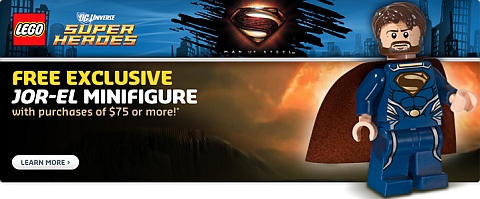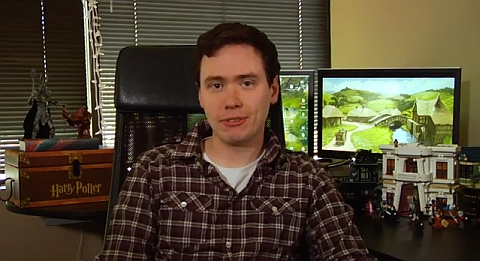LEGO recently introduced a new incentive to buy at the Online LEGO Shop by introducing free shipping on all orders over $75 every day and forever… well, at least until 2016… This will make online shopping so much more convenient; no need to wait for promotions or special offers for free shipping, which typically only happened around holidays. So, “Yay!” to LEGO for introducing everyday free shipping! 🙂
As we discussed previously there are lots of new LEGO sets released this summer; including the second wave of LEGO Galaxy Squad, a brand new LEGO Castle line, and new sets in the LEGO Creator, LEGO Legends of Chima, LEGO City, LEGO DUPLO and LEGO Hero Factory lines.
And there is also the LEGO Lone Ranger line, brand new for this summer and based on the Lone Ranger movie that will be released early July. Even if the movie flops (hopefully it won’t) the sets should be very popular with LEGO Western fans.
Oh, and besides free shipping you will also get a free exclusive Jor-El minifigure with purchases of $75 or more. Once your purchase reaches $75, your free exclusive LEGO DC Universe Super Heroes Jor-El Minifigure will be automatically added to your shopping bag. Available only through the Online LEGO Shop and official LEGO stores.
Besides LEGO Super Heroes here are some of the other new LEGO sets and themes this month that you might like to check out.
So what do you think? How do you like LEGO’s new offer for everyday free shipping? Are you planning to take advantage of it anytime soon? I know I’m planning to pick up at least one of the new LEGO Galaxy Squad sets, and I’m waiting for the release of the new LEGO Master Builder Academy set next month. What about you? What are you getting this summer? Feel free to share in the comment section below! 😉
And you might also like to check out the following related posts:


















